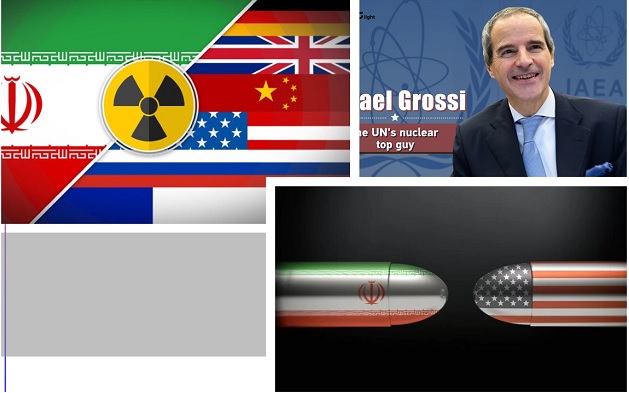
On Wednesday, the International Atomic Energy Agency (IAEA) published additional findings detailing Iran’s aggressive nuclear operations and unsolved disagreements with the authorities. Even as they prepare to resume talks in Vienna aimed at salvaging the 2015 Iran nuclear deal, the reports show the Iranian regime’s authorities’ continued lack of cooperation.
Stockpiles of the regime’s most highly enriched nuclear material have grown to 17.7 kg, according to the IAEA report, up from only 10 kg at the time of a previous report in August. As per experts, if refined further, this may provide 10 kg of 90% enriched uranium, which is about half of what would be required for a nuclear weapon. Given the regime’s current capabilities, a further 10 kg of weapons-grade material could be extracted from lower-enriched stockpiles in a matter of months.
The regime’s new head of the Atomic Energy Organization claimed in October, following the release of the IAEA’s most recent quarterly report, that they had gathered more than 120 kg of 20% enriched uranium. This value was approximately 50% more than the IAEA’s assessment, and Tehran’s stocks “have more than that figure,” Mohammad Eslami said.
Striking deals with #Iran’s regime, as proven in recent months, will only embolden the mullahs to continue their nuclear program & malign activities. The West should end Tehran’s race towards nuclear weapons by sanctioning the regime.#JCPOAhttps://t.co/txkm4if57P
— Mohammad Mohaddessin (@Mohaddessin) November 24, 2021
The ambiguity of this statement was most probably intended to upset the international community over the restrictions placed on the IAEA’s operations earlier this year. Following the adoption of a measure enacted by the regime’s parliament in an attempt to persuade Western countries to either withdraw or begin breaking US sanctions that had been reimposed, nuclear inspectors were nearly removed from Iran in February. The ousting was averted because of a last-minute compromise reached by IAEA Director General Rafael Grossi, although inspectors were refused access to nuclear sites for the time being.
The regime has also barred the IAEA from watching video surveillance on such facilities since February. Another deal was required to allow routine maintenance on those cameras, as well as other data collection equipment that Tehran has kept out of bounds. However, because the agreement took so long to reach, there was a two-week period during which footage could not be recorded due to storage device capacity.
In the coming week, Rafael Grossi will return to Iran. Even though Grossi has grown increasingly skeptical of both the Iranian regime and Western relations with it, the planned meetings imply that he has not given up hope of saving the JCPOA. Grossi noted publicly after the publishing of the second quarterly report that Tehran’s provocations made it impossible to simply restore the JCPOA without amendments or the establishment of a parallel deal. Then, in October, when asked whether it would be a good idea for the Board of Governors to sanction Iran, he said yes.
Questions remain on Iran’s nuclear program before talks resume in Vienna#Iran #JCPOA https://t.co/1wjTLESvdf
— People's Mojahedin Organization of Iran (PMOI/MEK) (@Mojahedineng) November 23, 2021
Because previous conversations have failed, the IAEA’s Board of Governors should impose extra pressure on Iran’s leadership by issuing a formal censure when it meets next week.
When Ebrahim Raisi was chosen as the regime’s president in June, the Vienna discussions came to a halt. Since then, Raisi has appointed foreign policy experts who have openly opposed the nuclear deal, as well as the concept of negotiating with Western nations in general. For a long time, the regime has been dragging its feet on the nuclear accord. Reaching an agreement with the regime or reopening dialogue will just buy the regime more time to develop a nuclear weapon. Increased sanctions on the regime and the reinstatement of the UN Security Council’s six resolutions on Iran’s nuclear adventurism should put an end to Tehran’s nuclear program once and for all.
Follow Maryam Rajavi’s on her site Twitter & Facebook and follow NCRI (Twitter & Facebook)
and follow NCRI (Twitter & Facebook)
MEK Iran (on Twitter and Facebook)
and People’s Mojahedin Organization of Iran – MEK IRAN – YouTube









